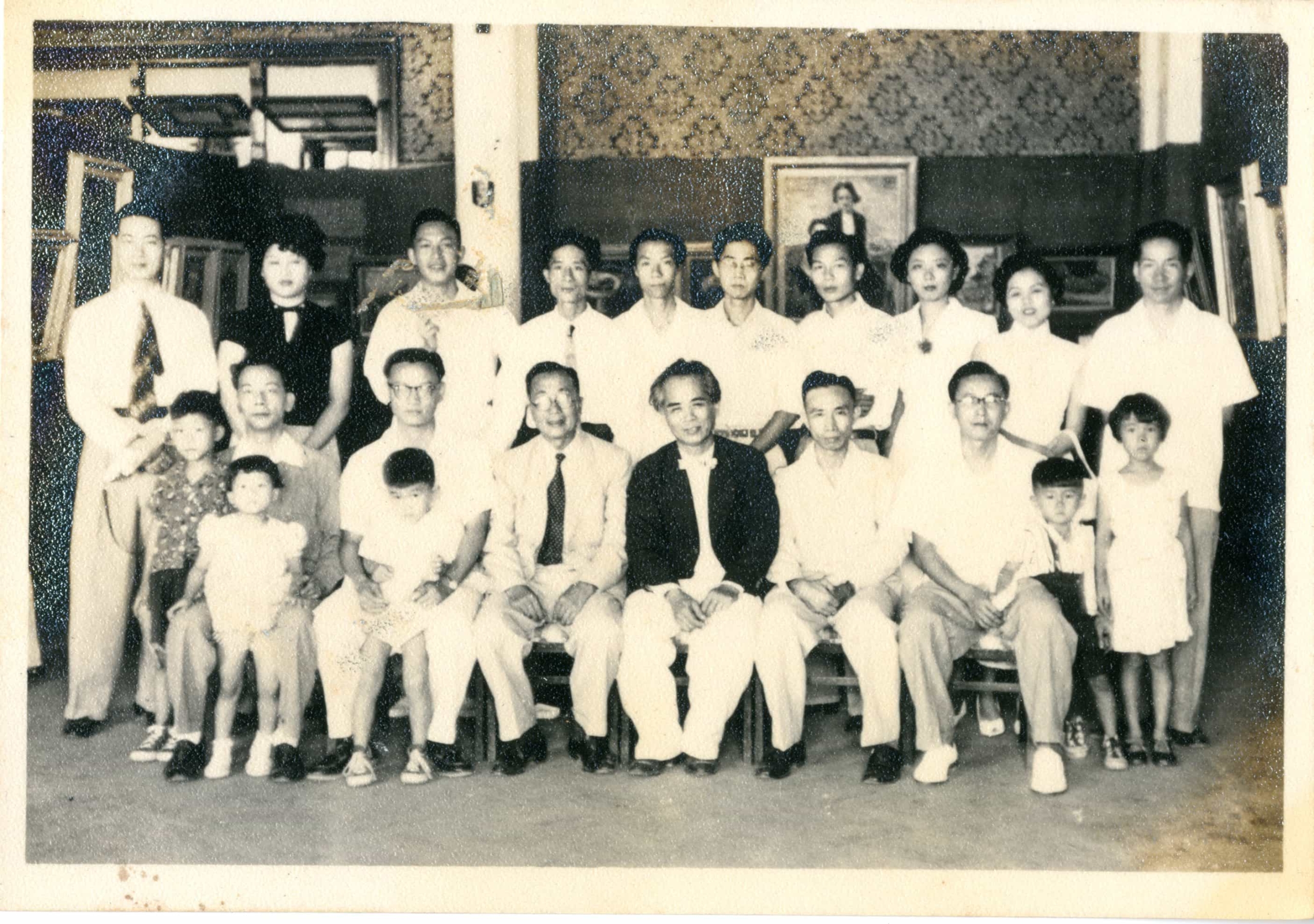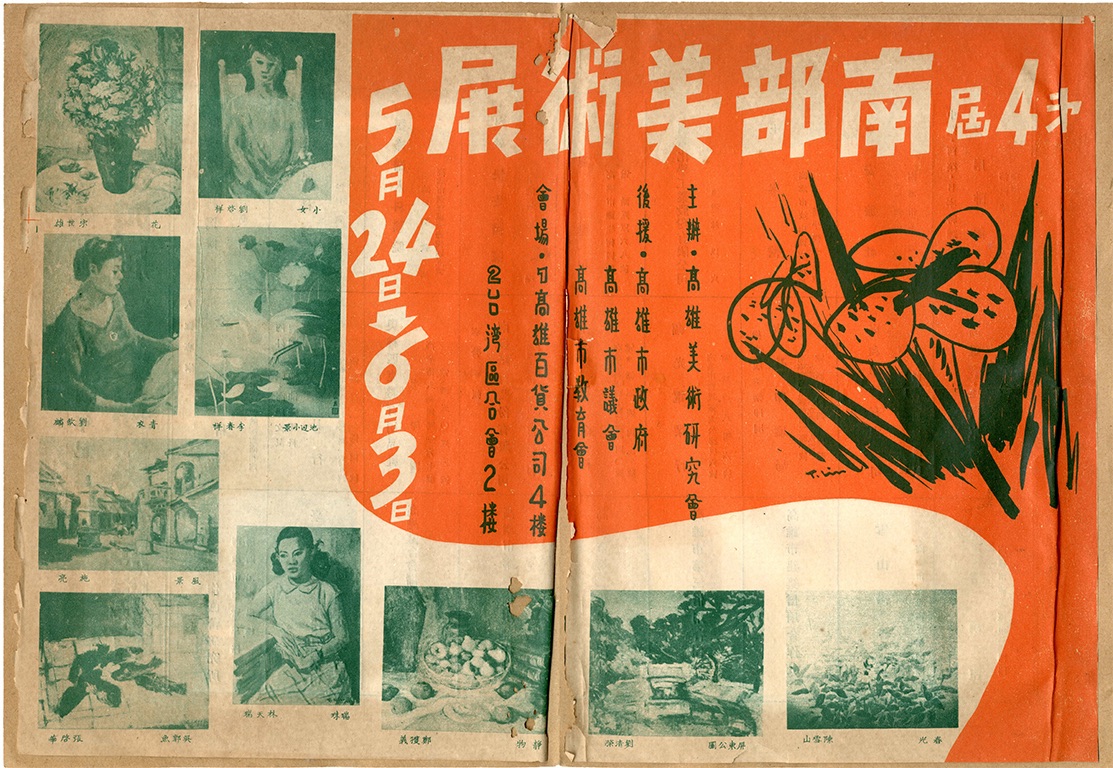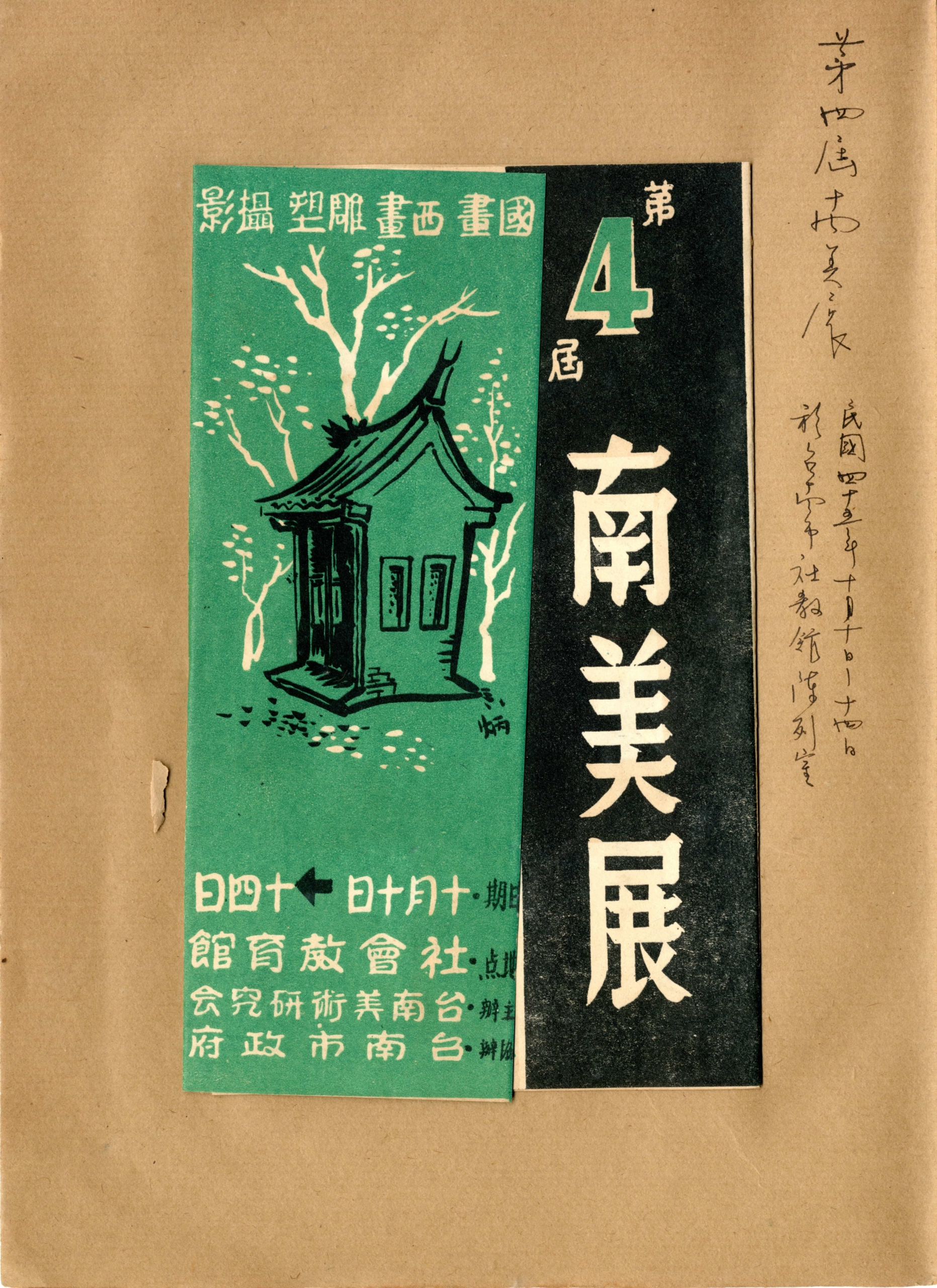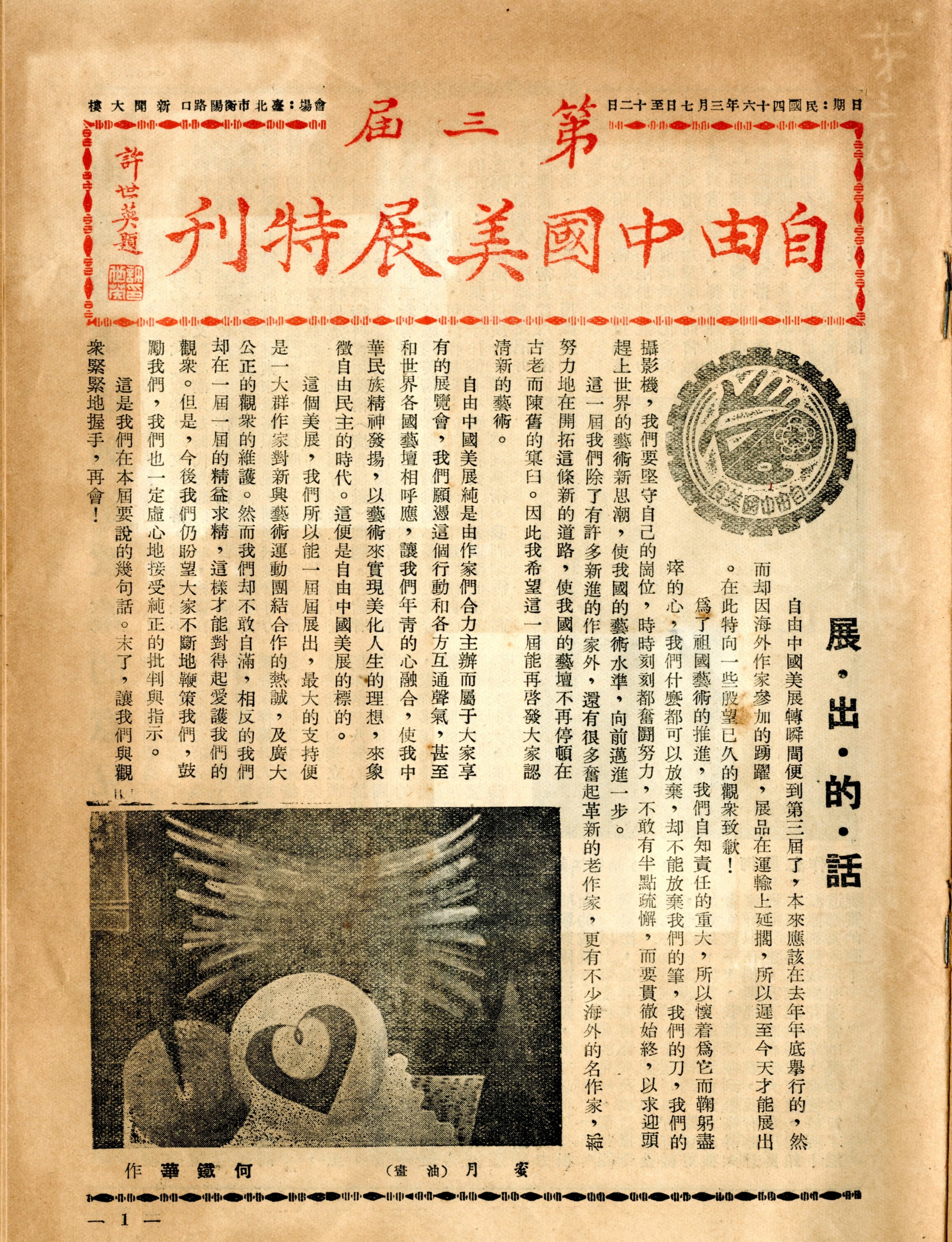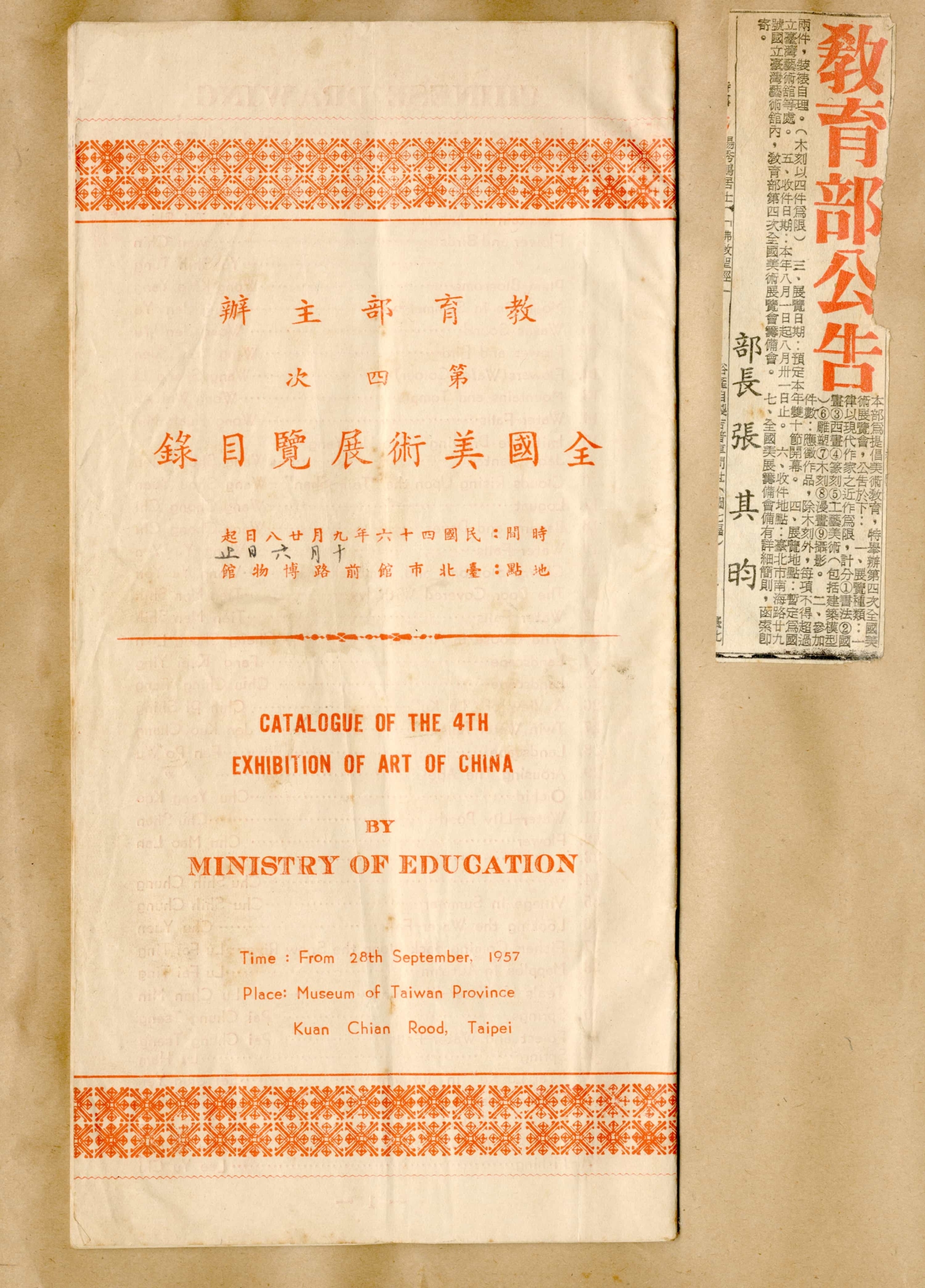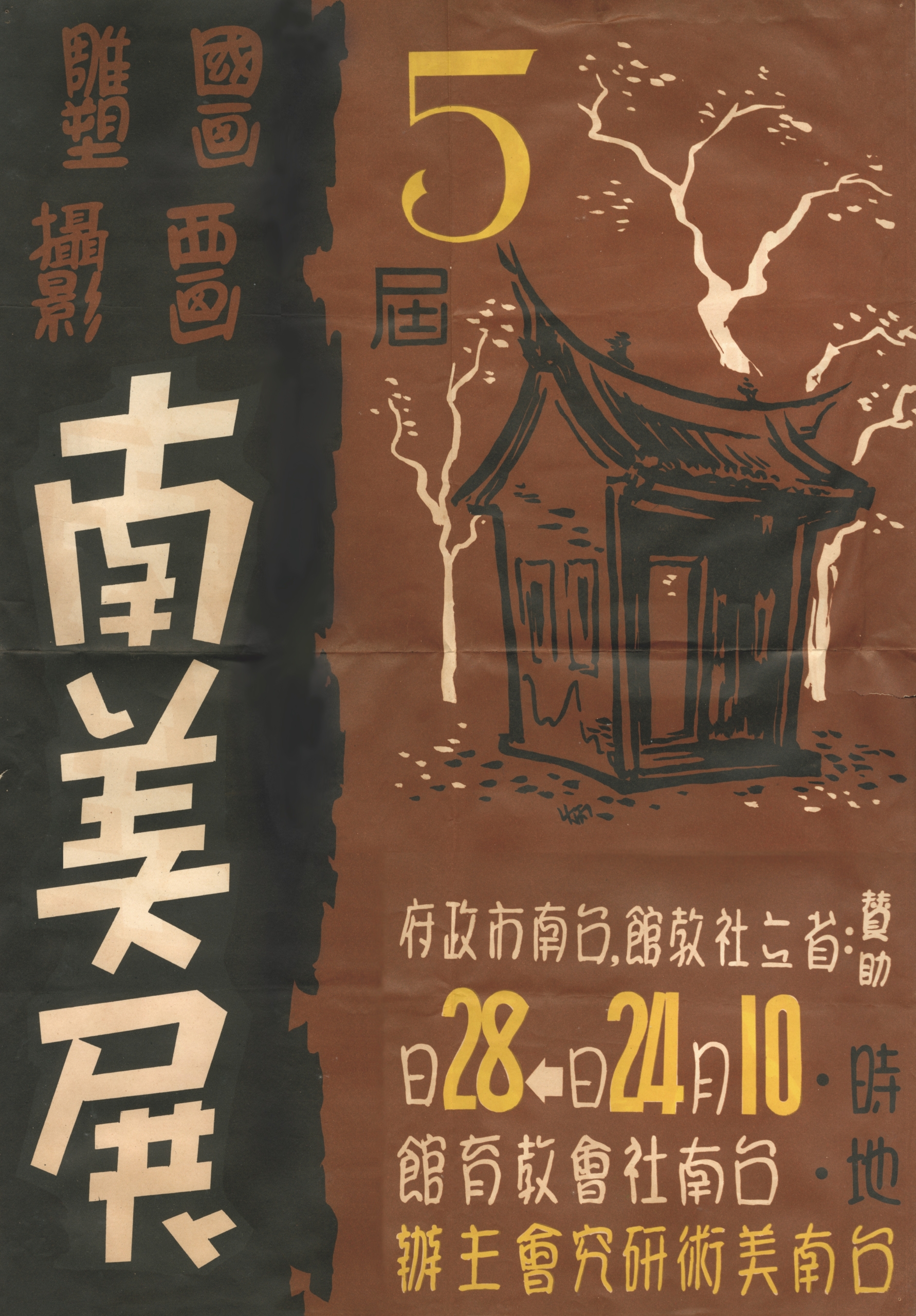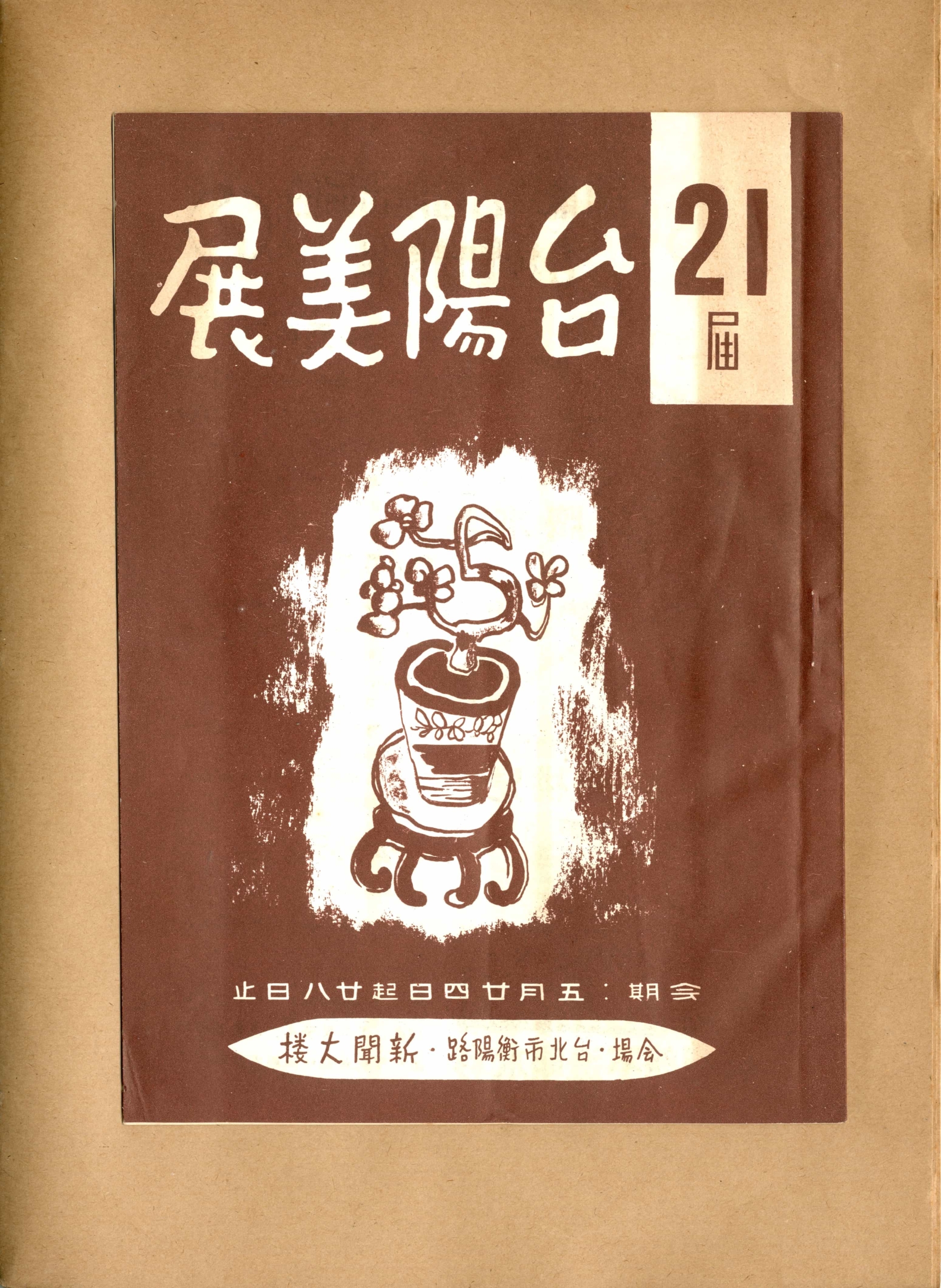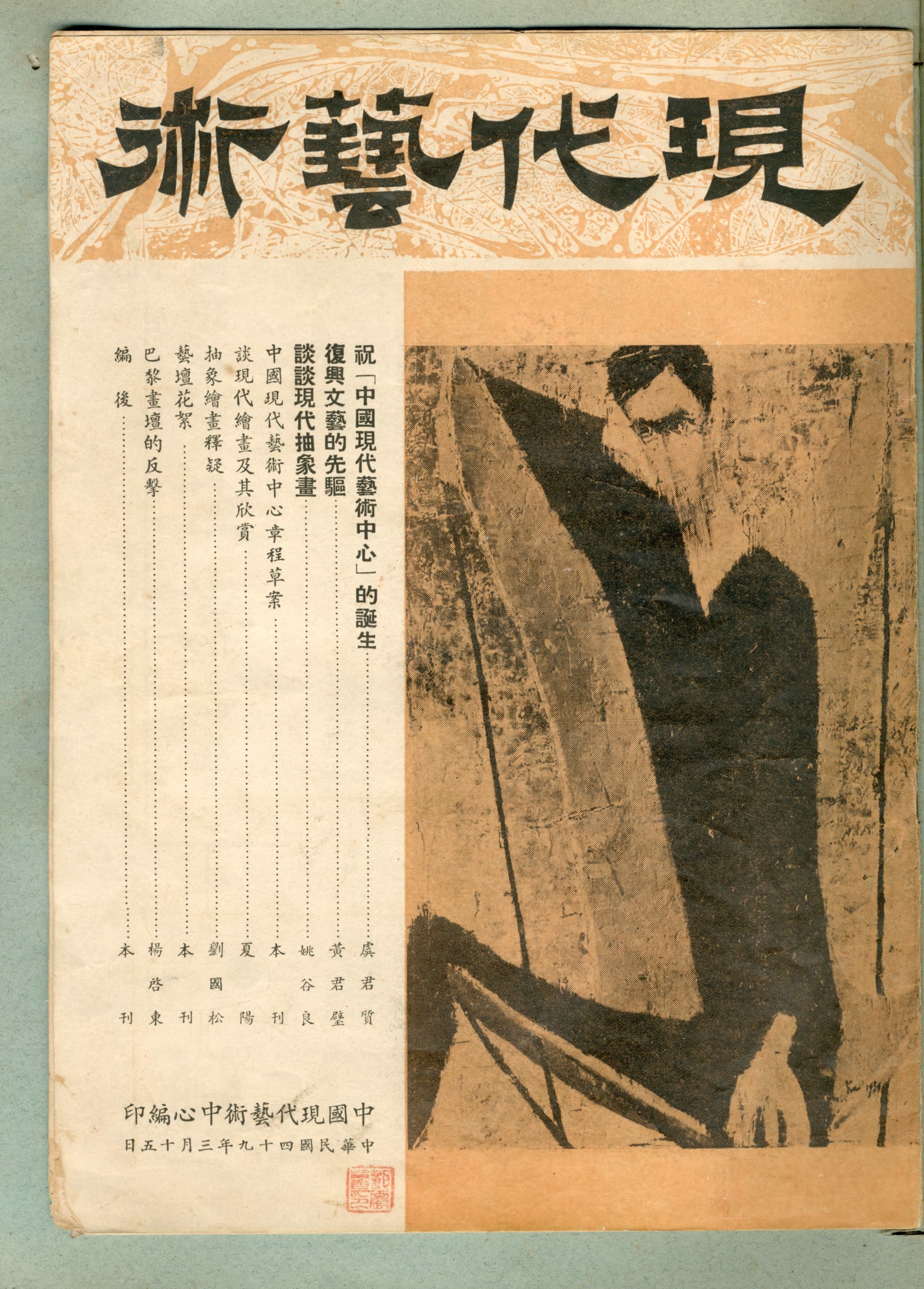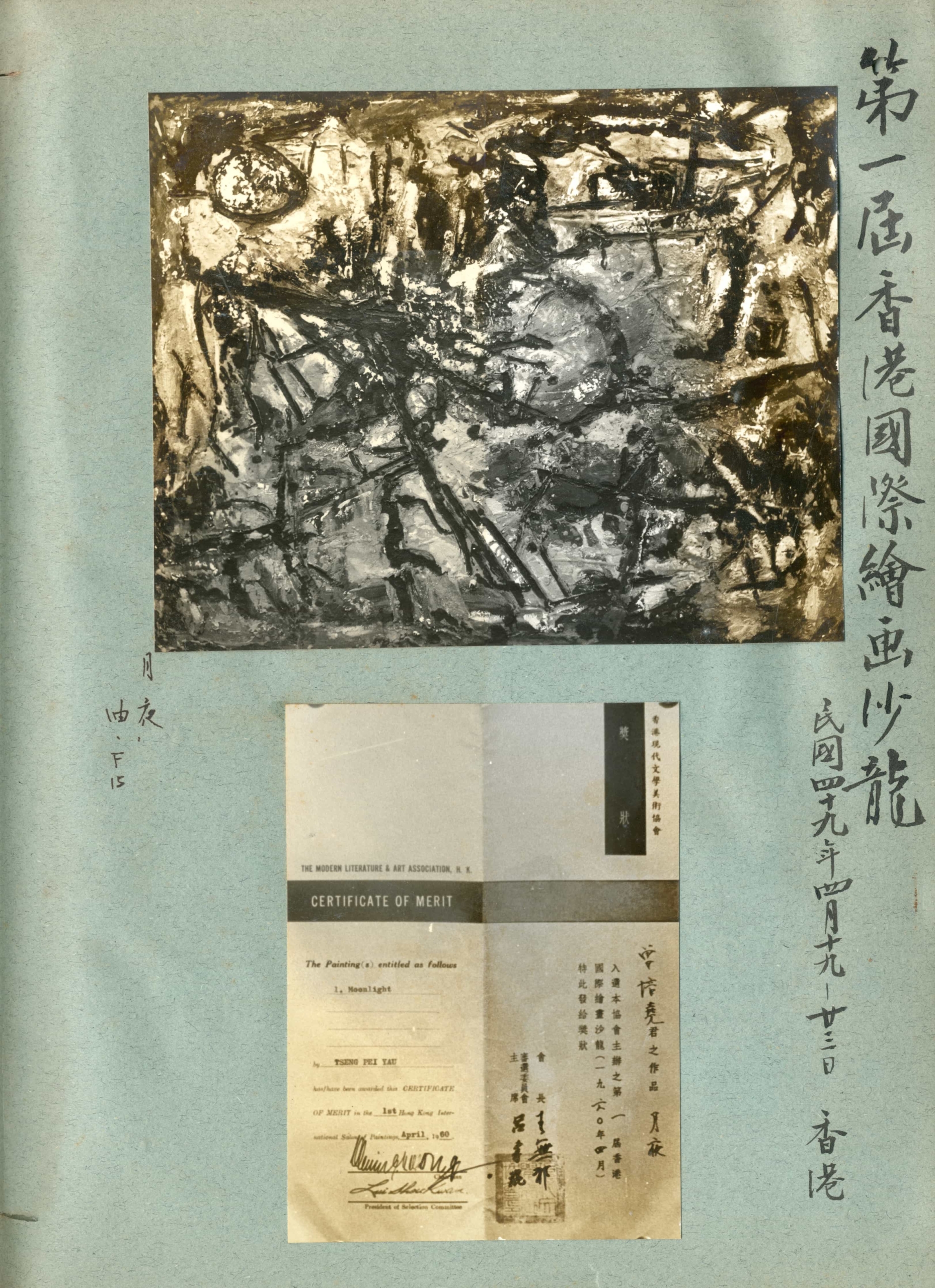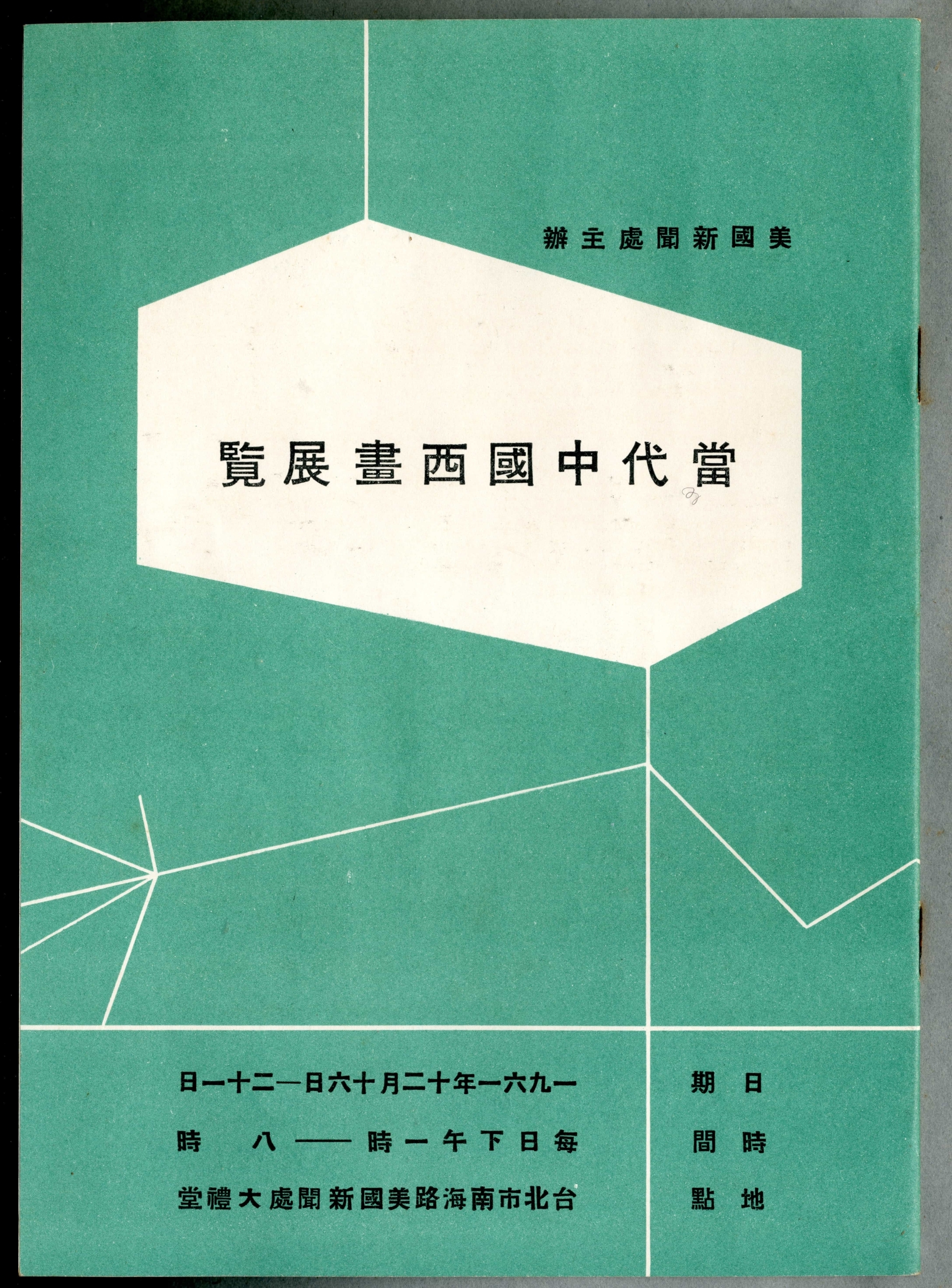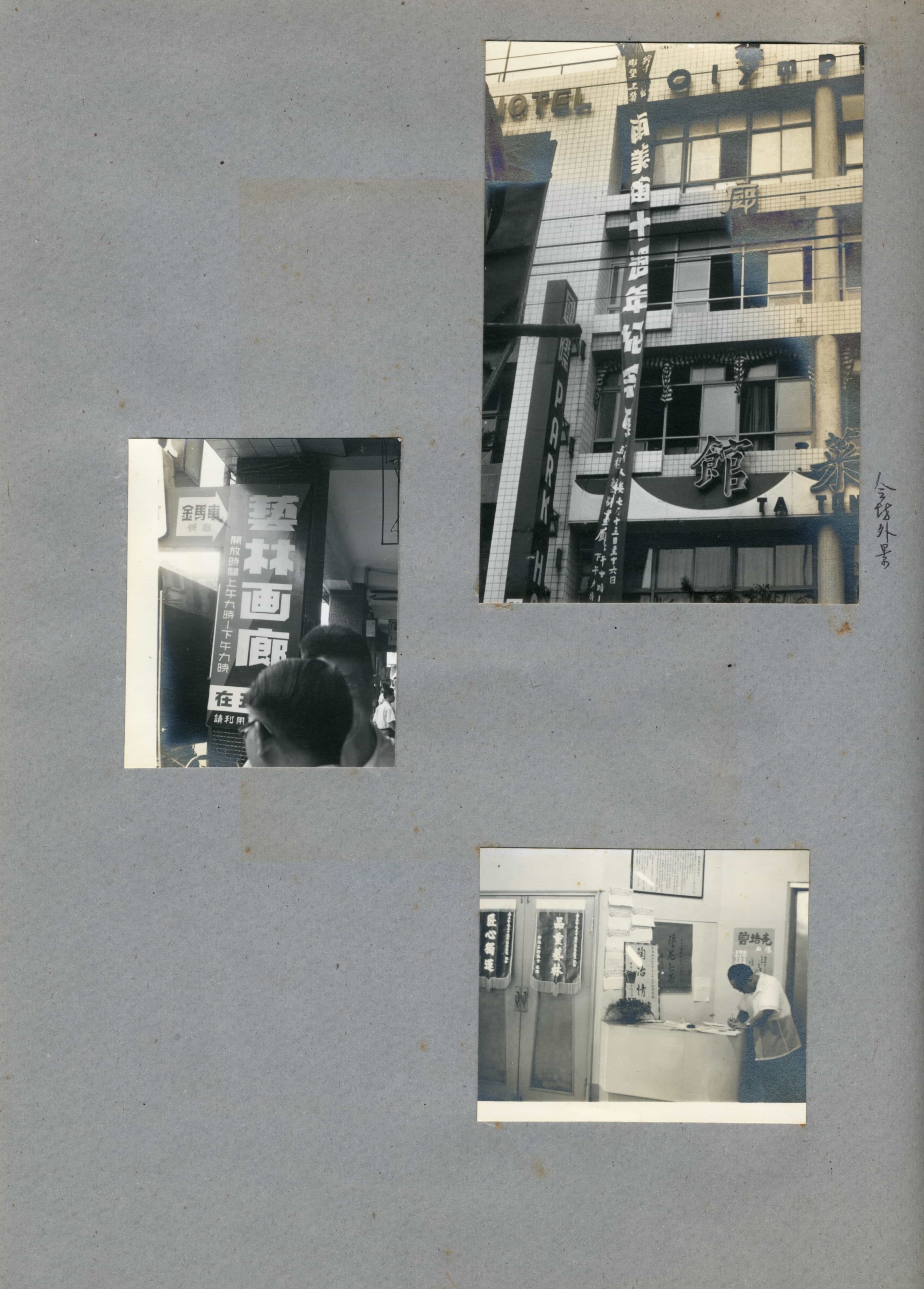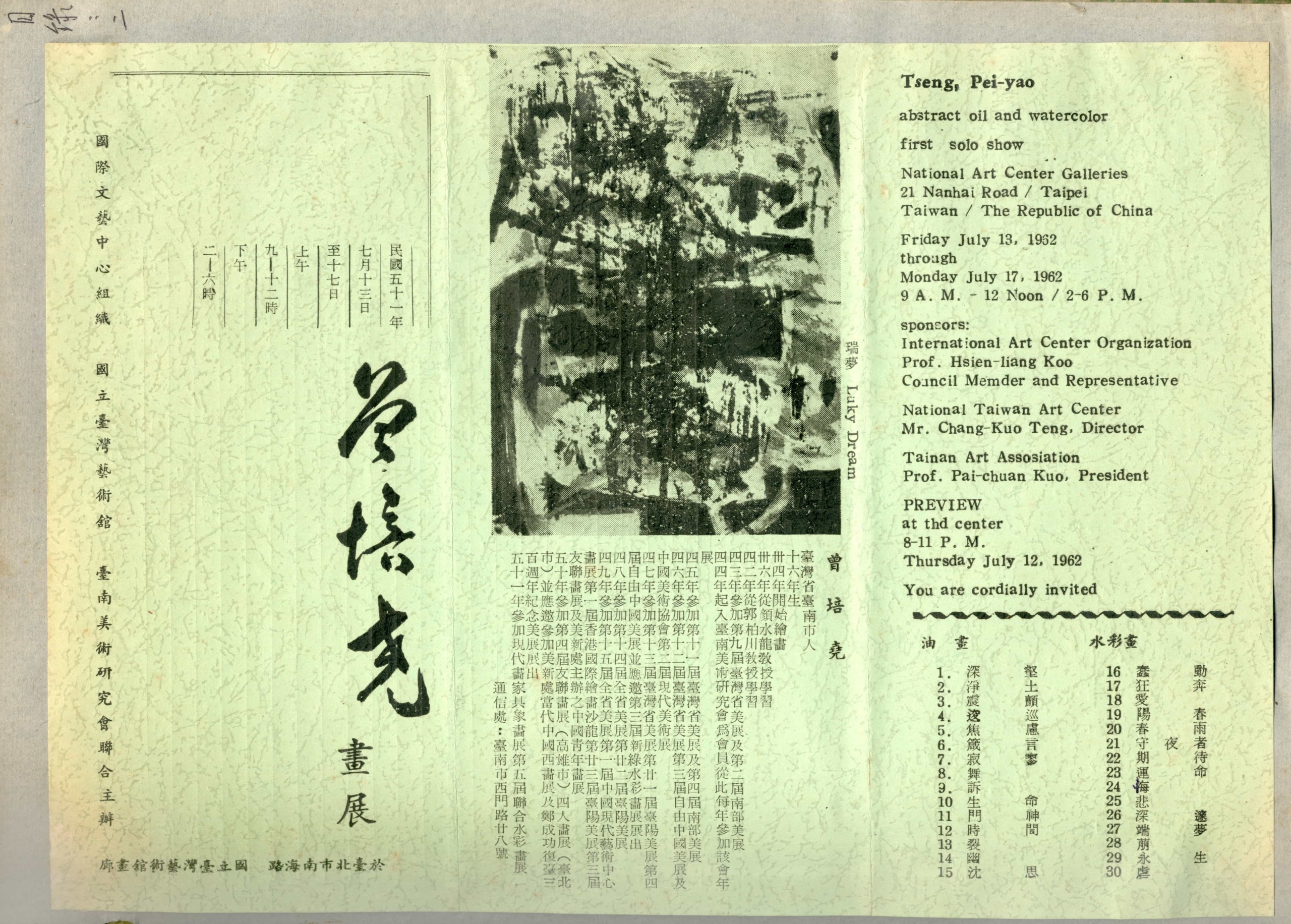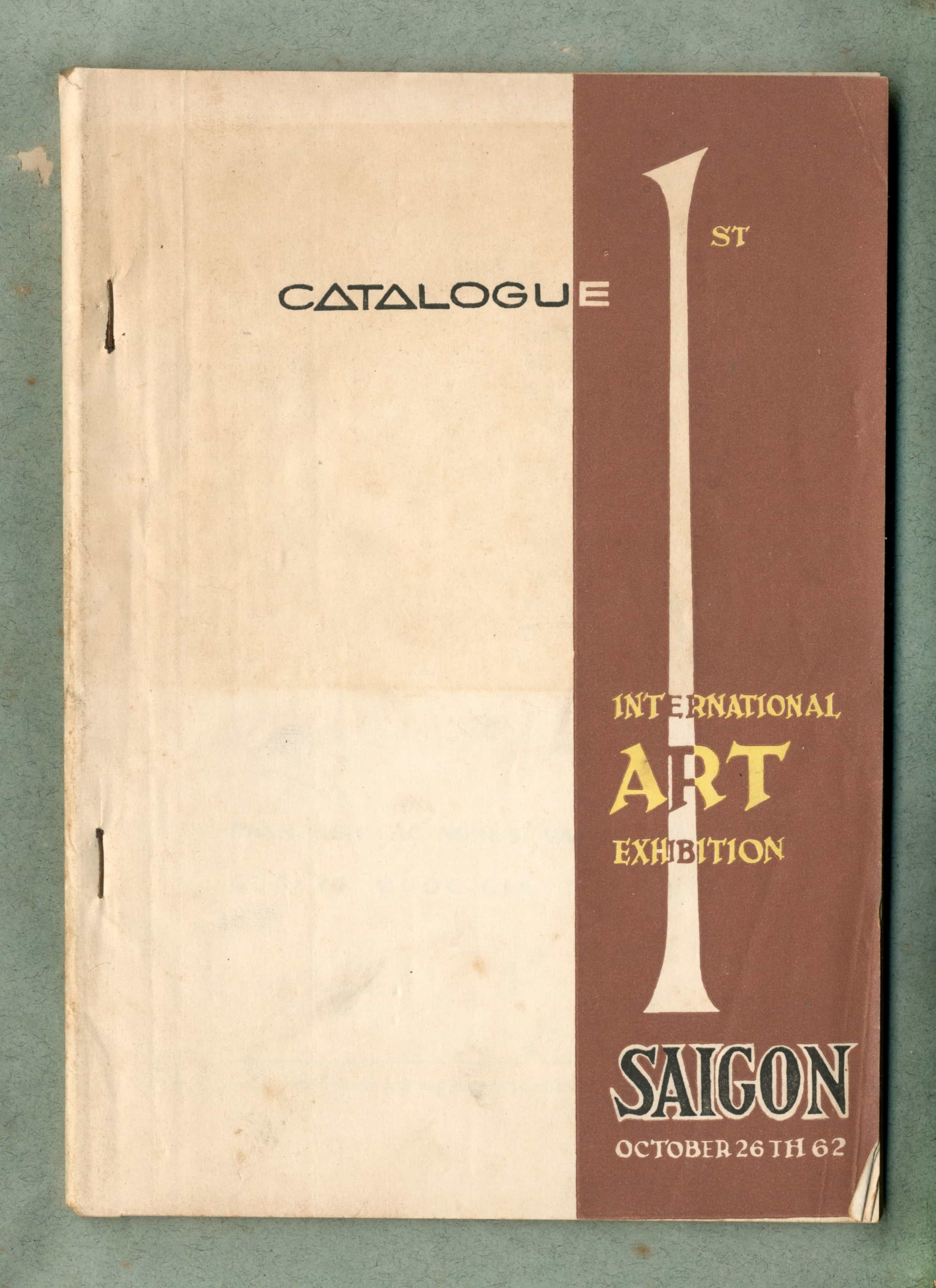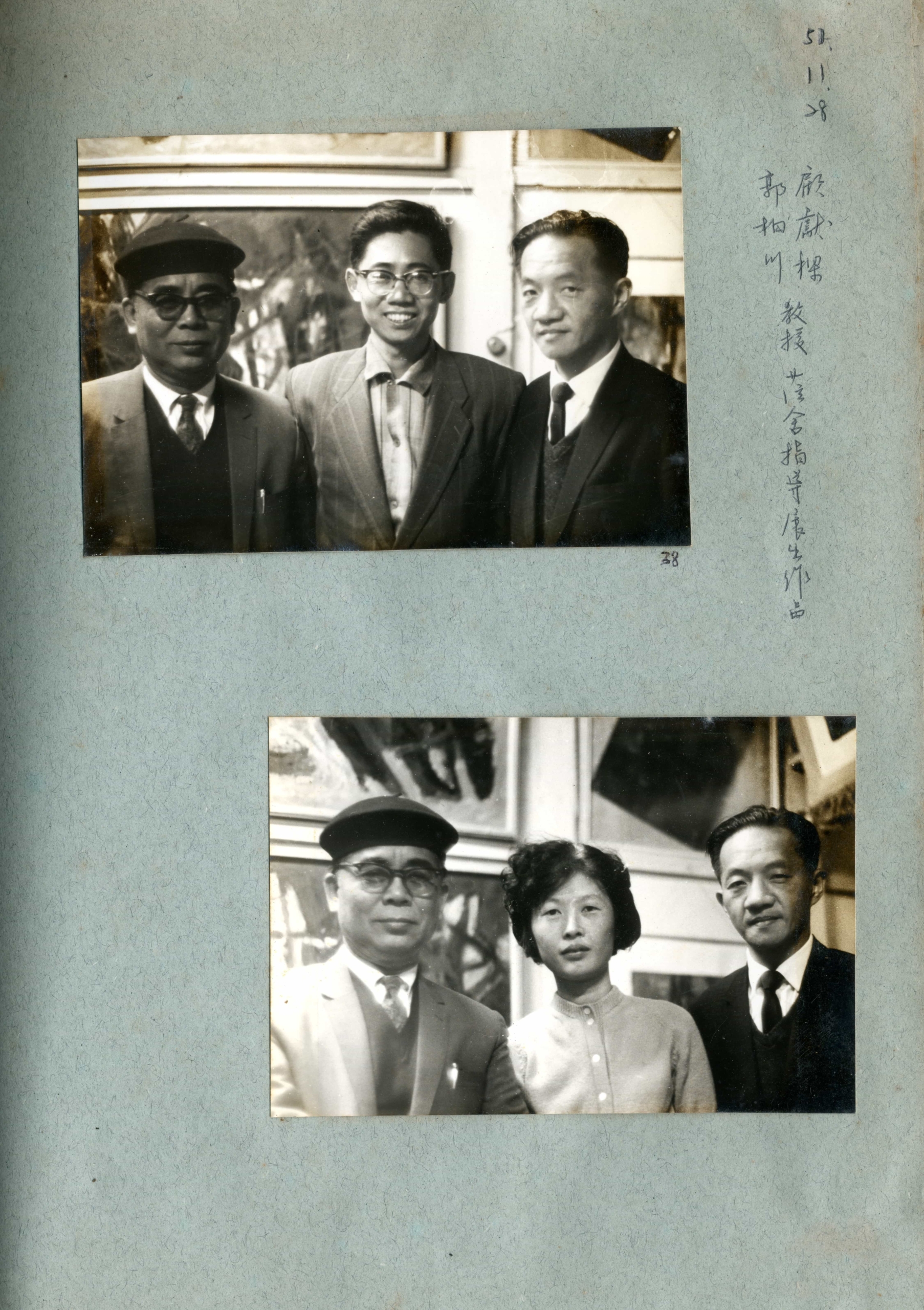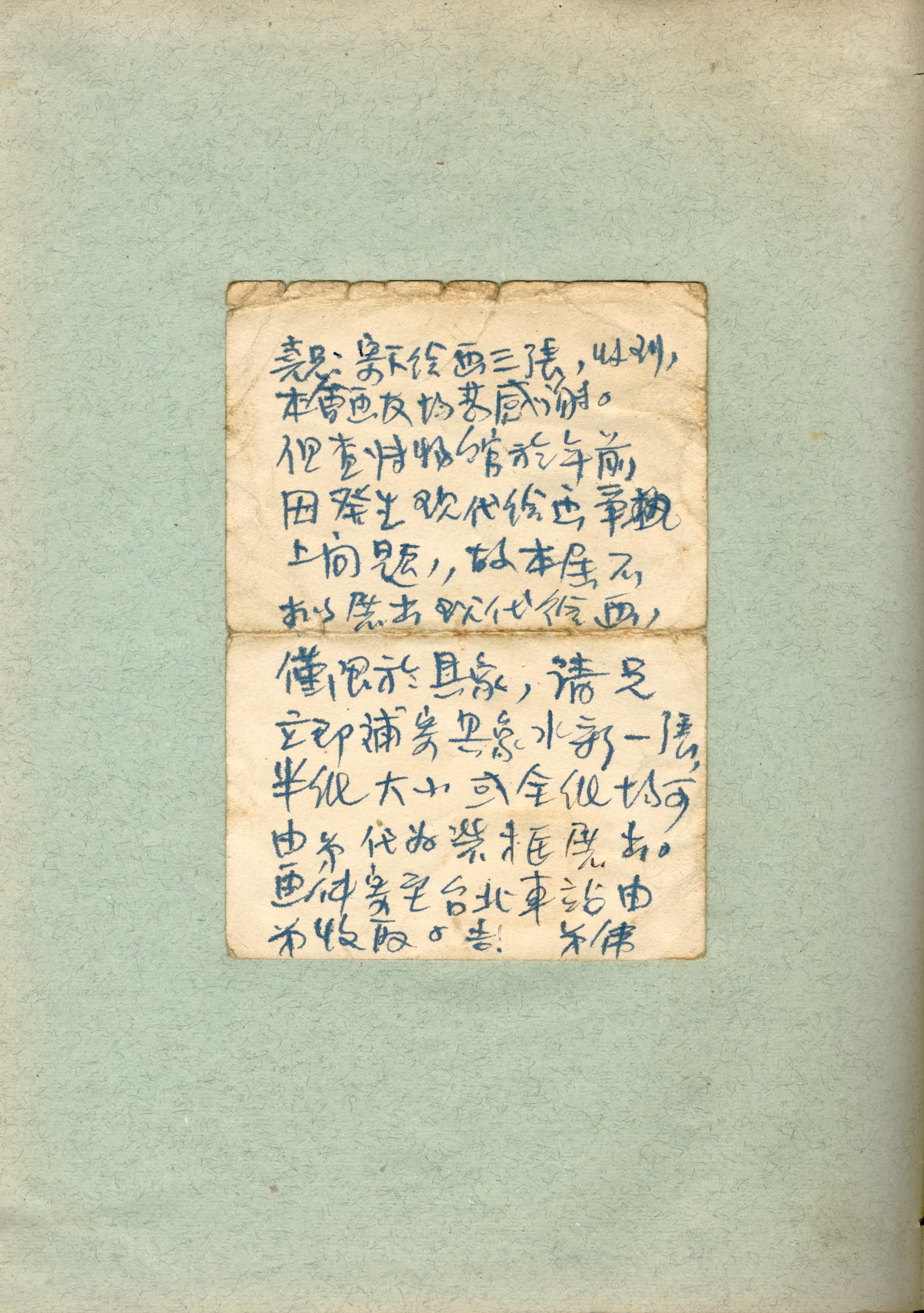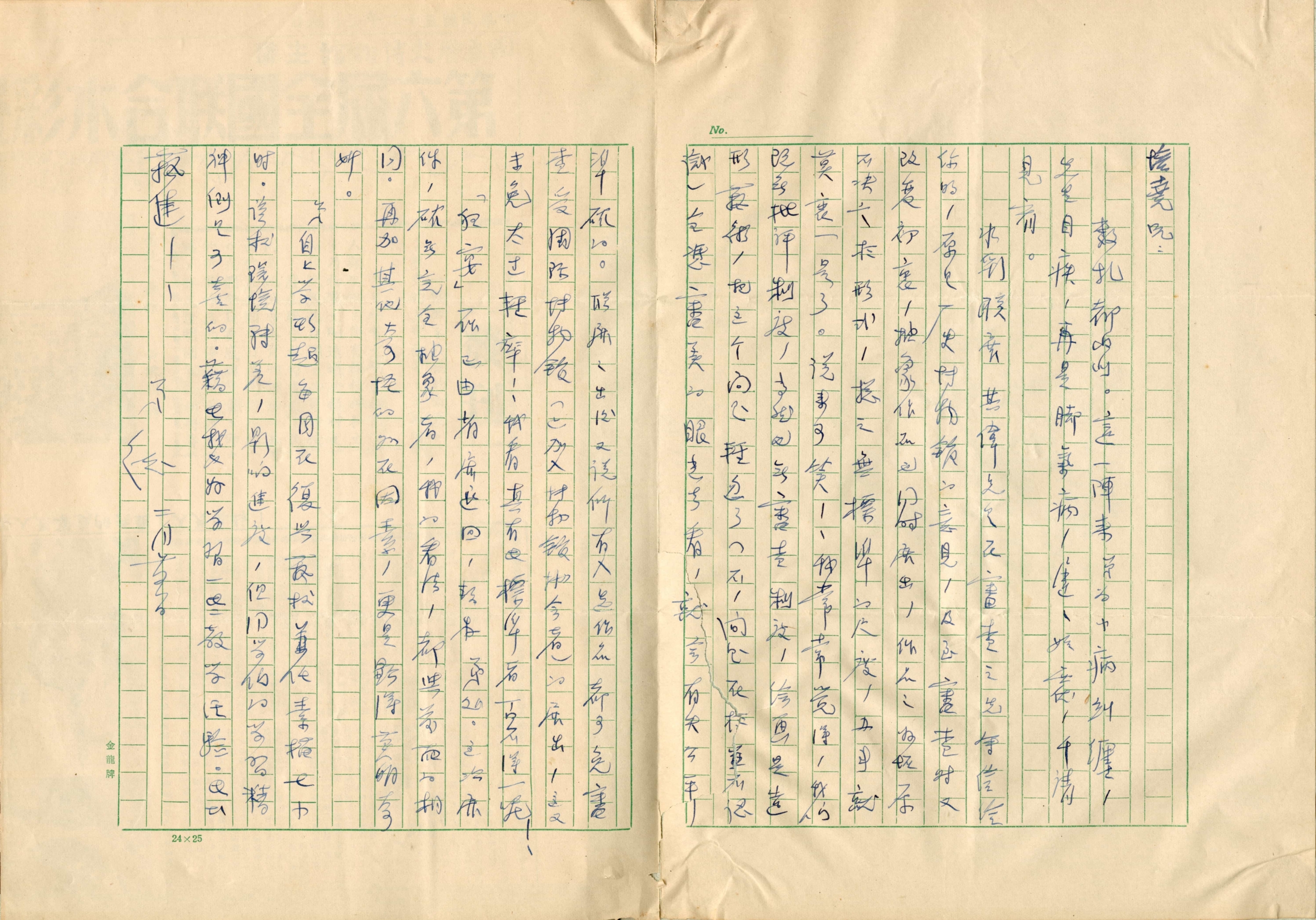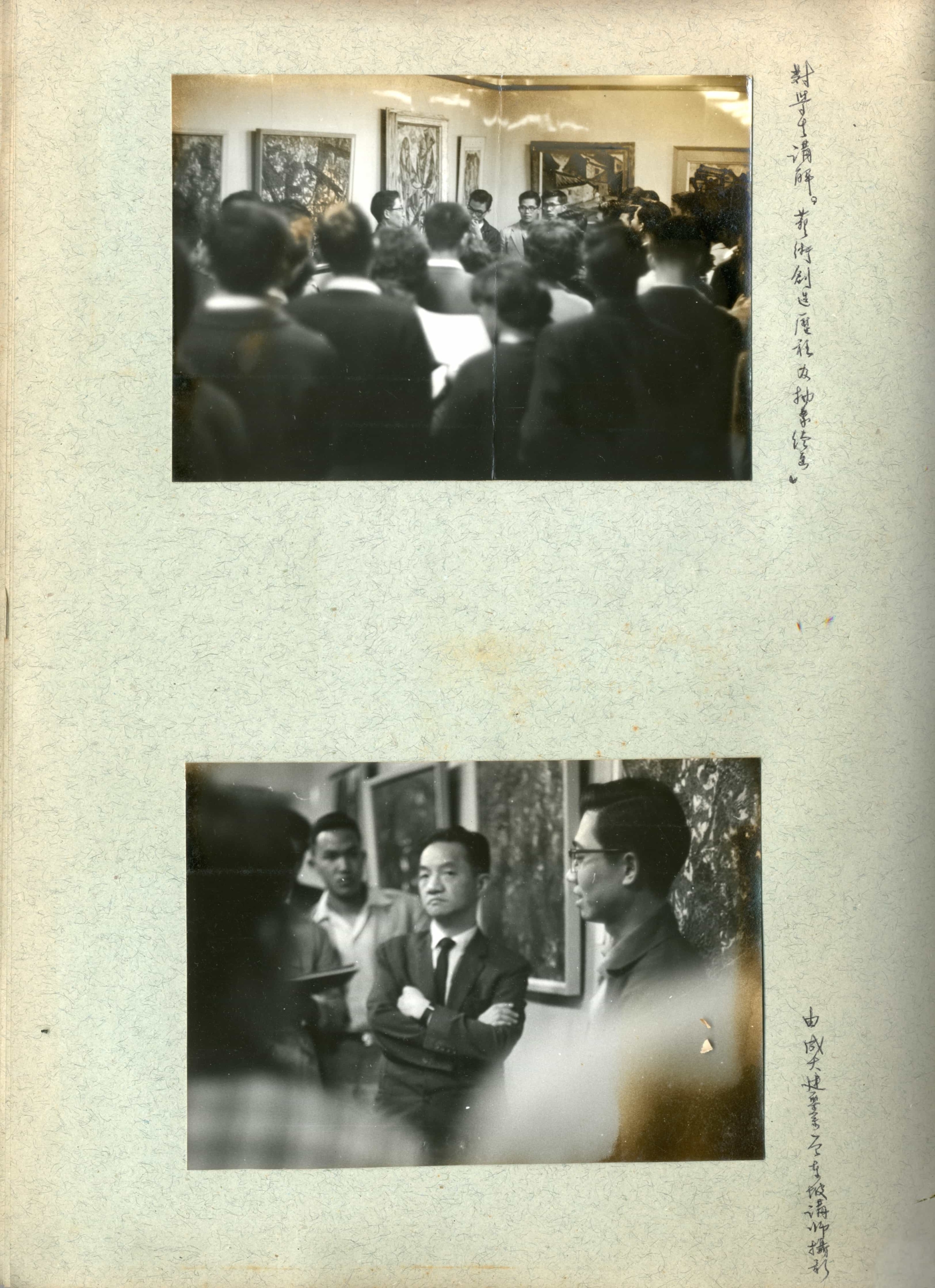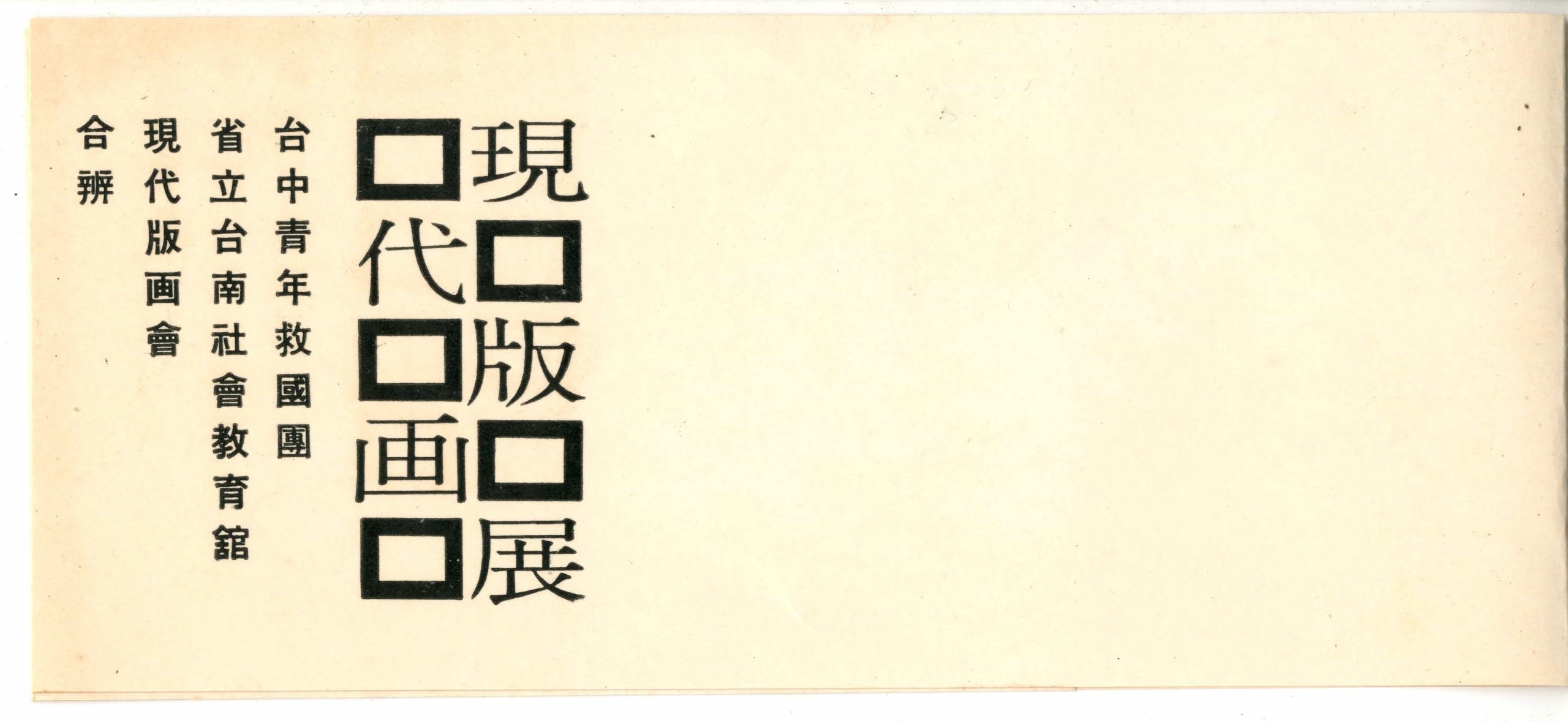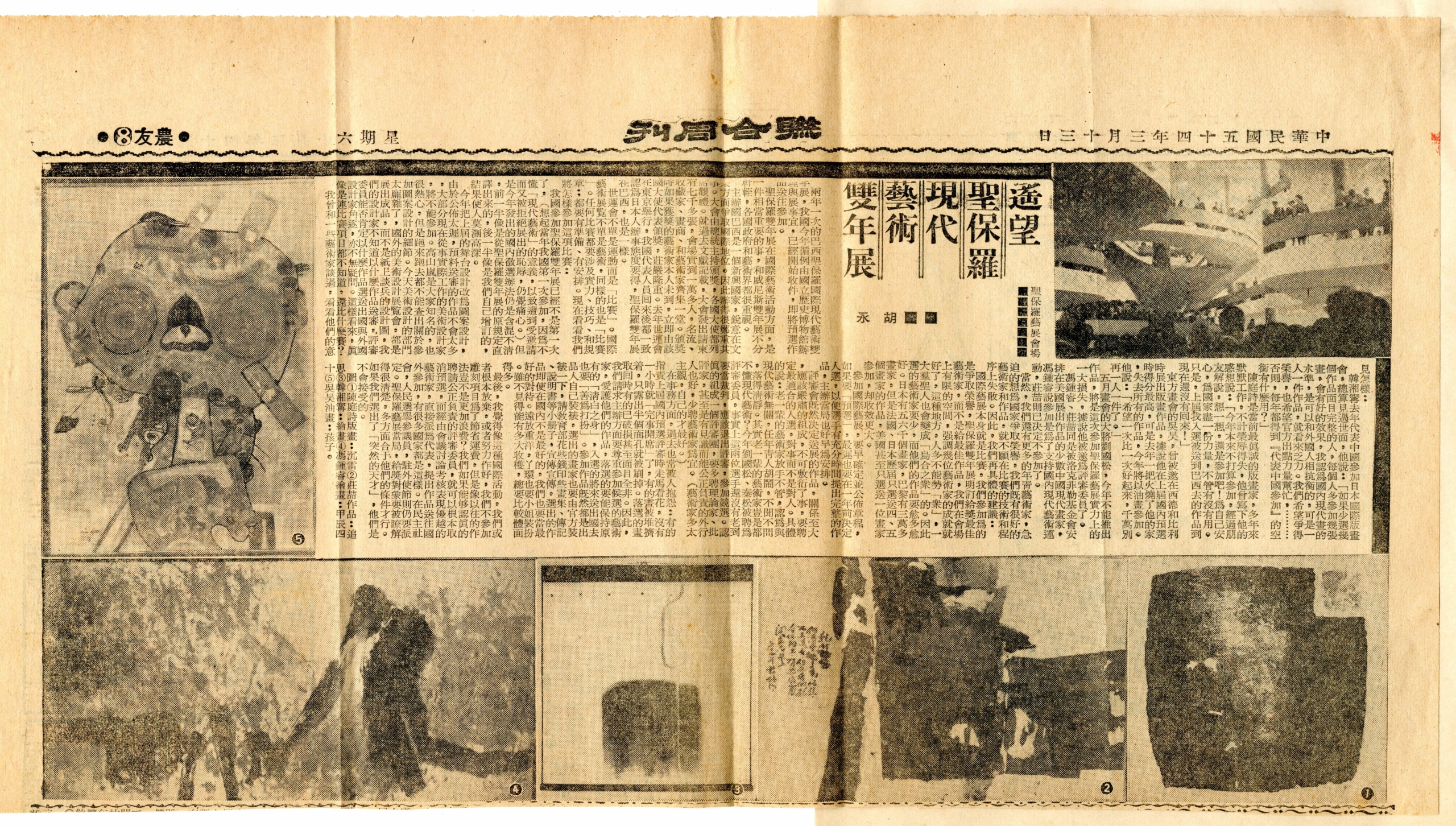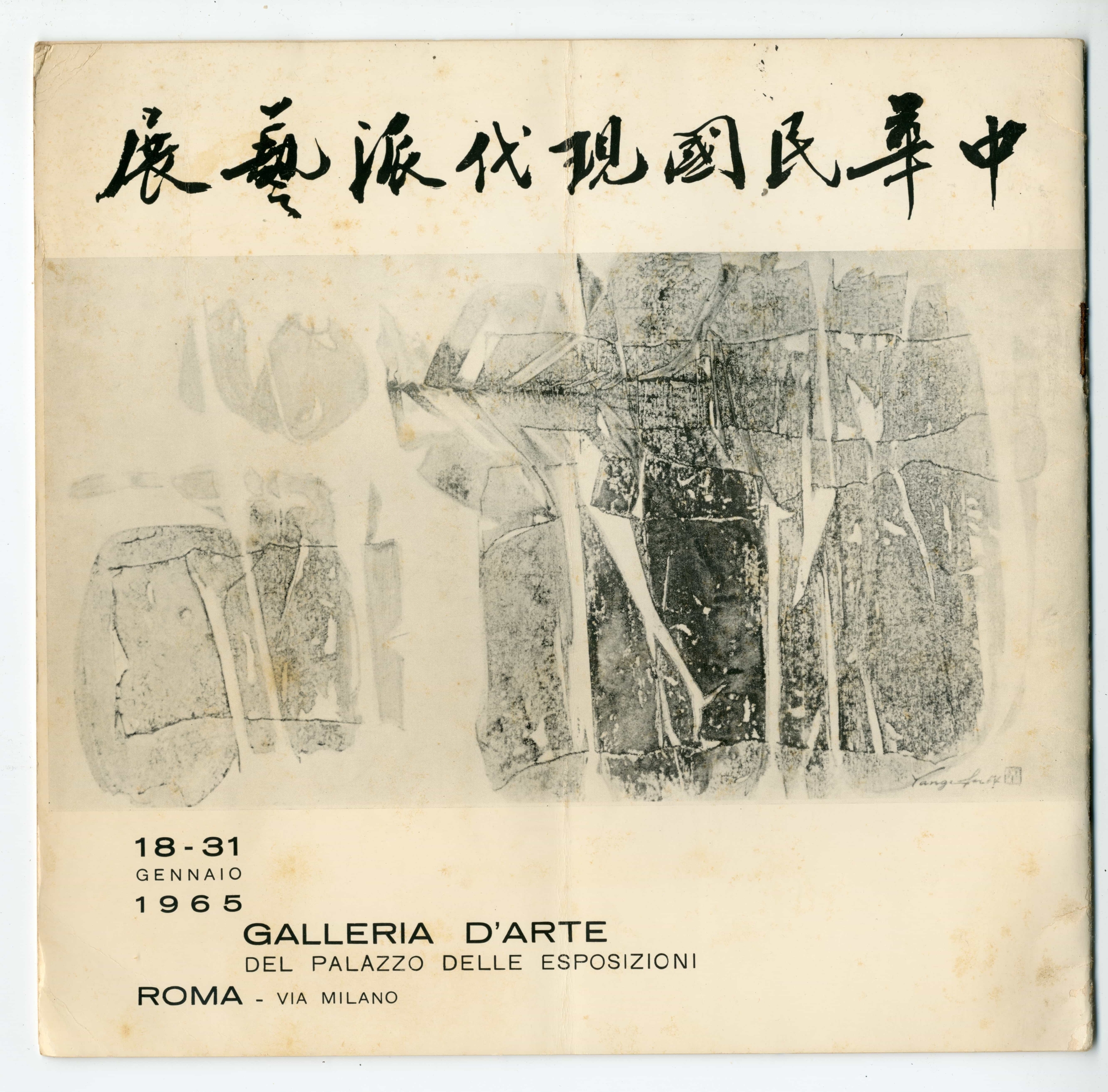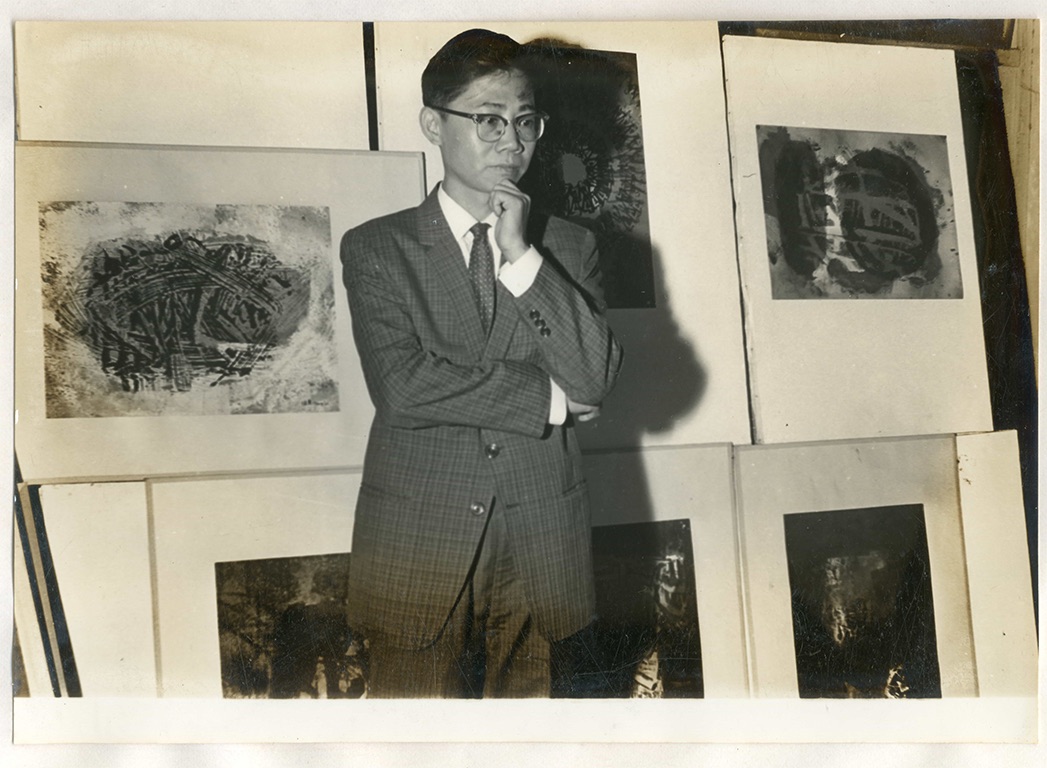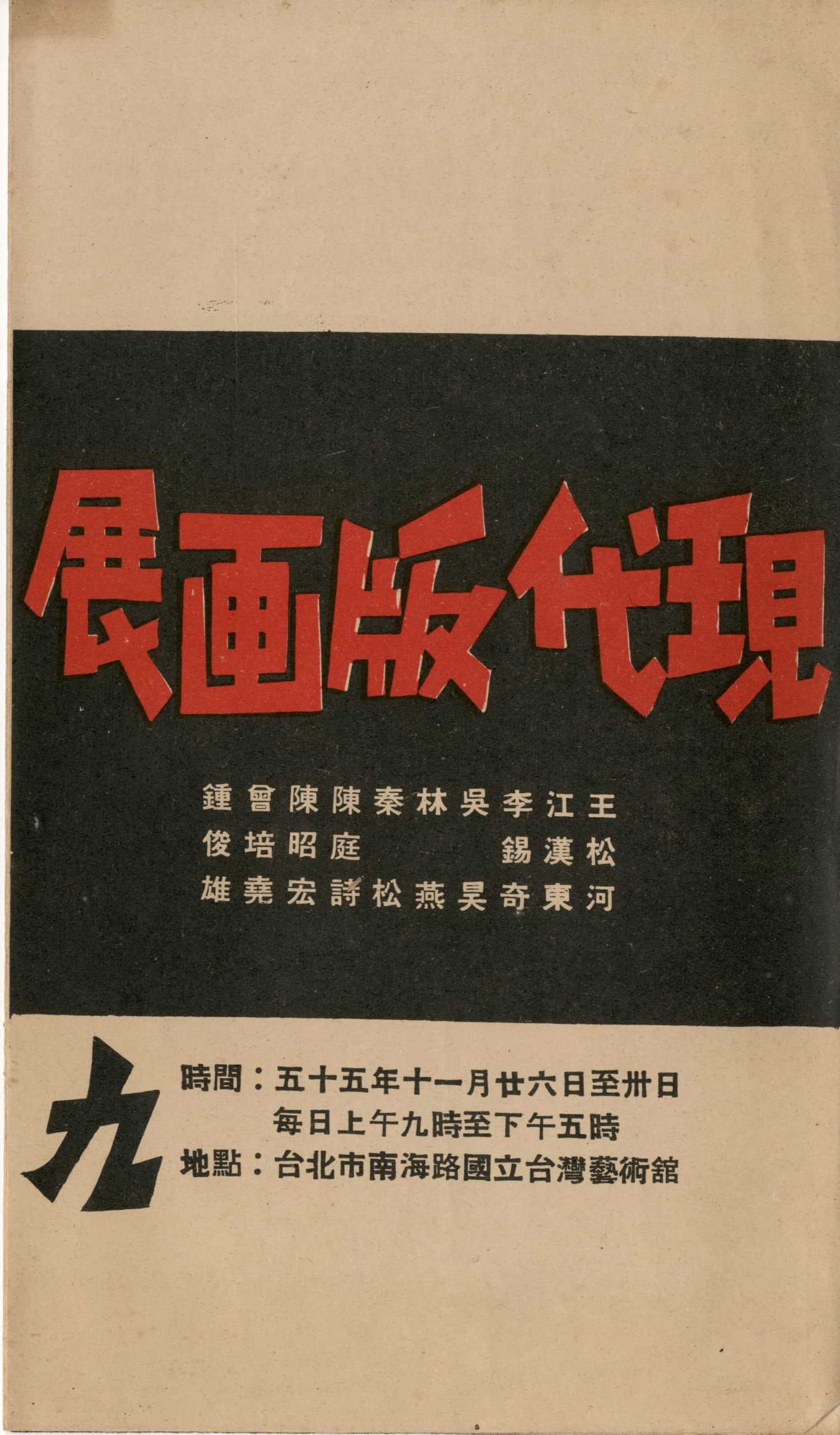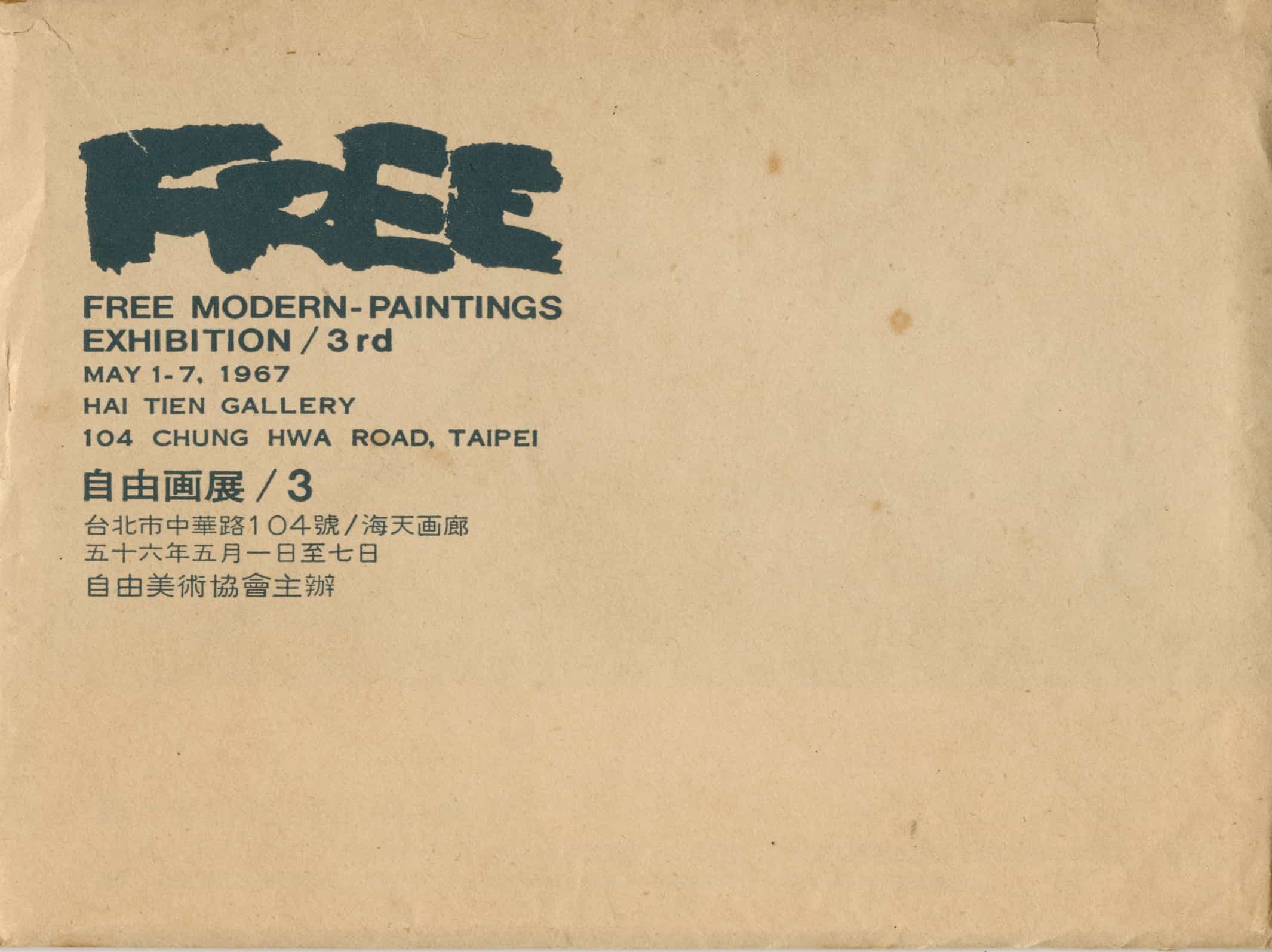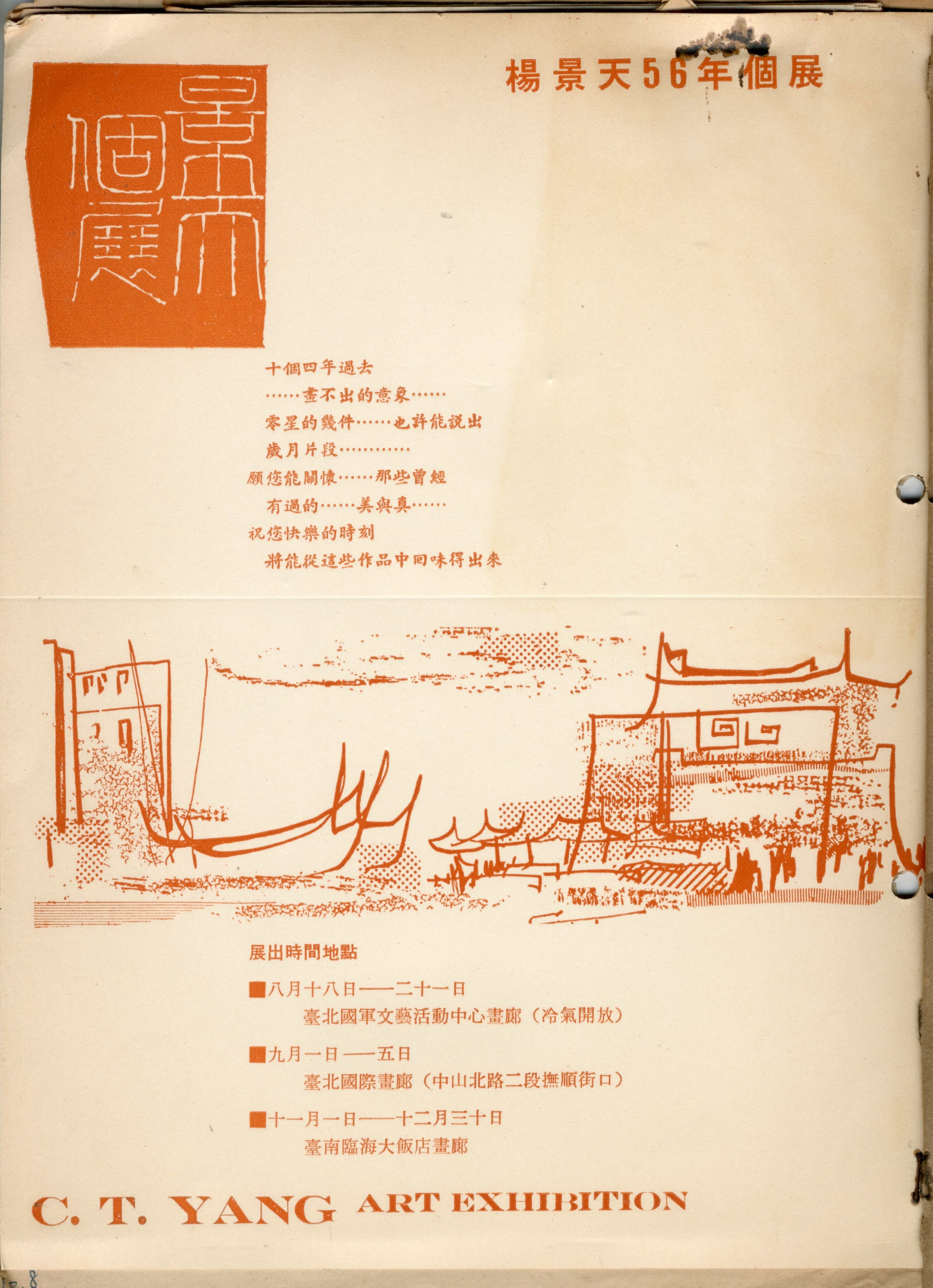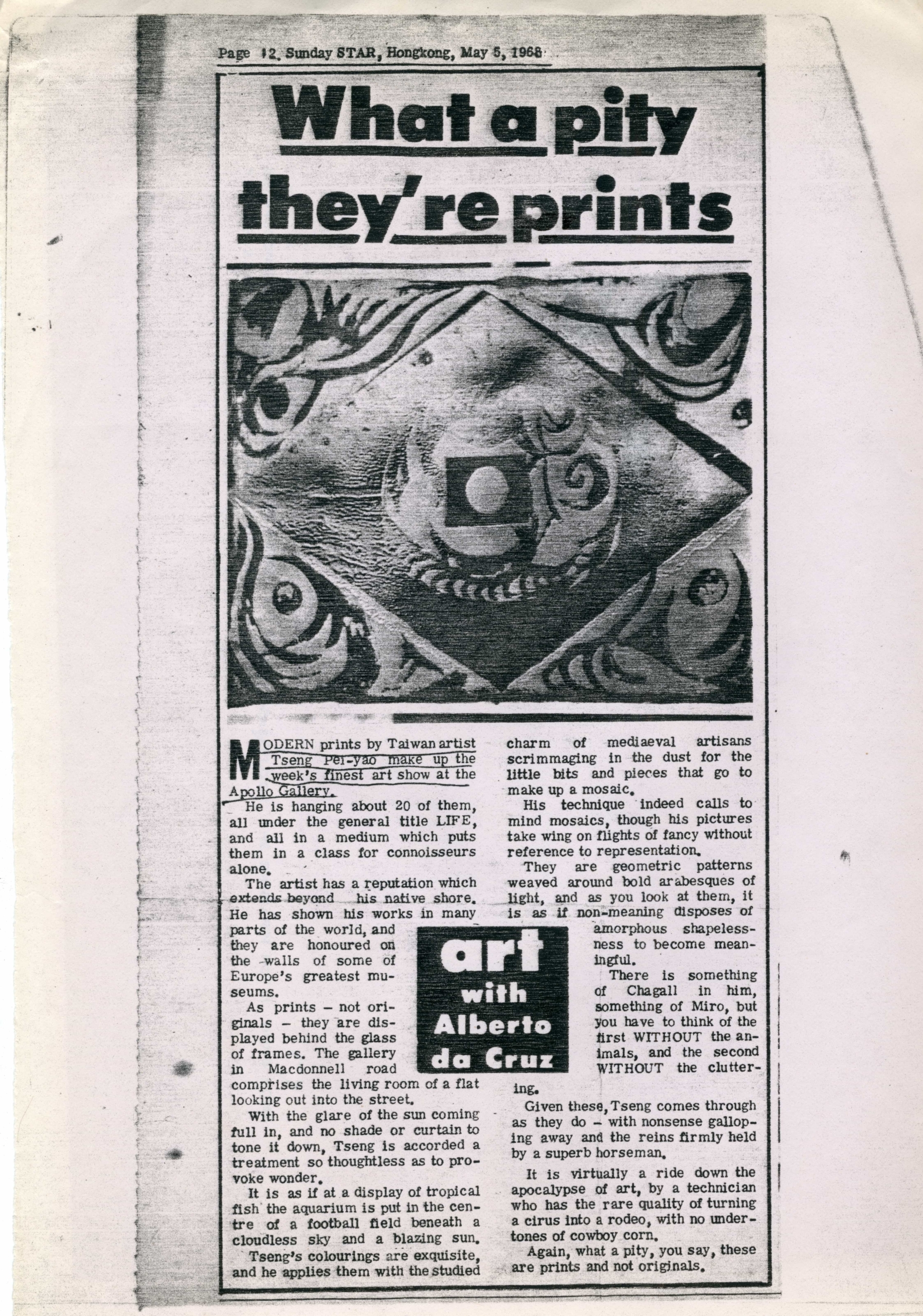Tseng Pei-Yao and Tainan Art History Archive Maintenance and Promotion Project
Tseng Pei-Yao 1927–1991
Born in Tainan City and studied painting under Yen Shui-Long and Kuo Po-Chuan. He joined the Tainan Fine Arts Association in 1954, and subsequently joined the Modern Print Association, the Chinese Watercolor Society, and the Chinese Modern Ink Painting Association, through which he became extensively involved in the modern art movement. He also partook in the establishment of abstract art groups, including the Freedom Fine Arts Association and the Southern Fine Arts Association.
Tseng’s works were selected into the Free China Arts Exhibition, the Taiwan Provincial Fine Arts Exhibition, and the National Art Exhibition R.O.C. multiple times, and were featured in various international art exhibitions, such as the Hong Kong International Salon of Paintings (1960), the International Exhibition of Fine Arts of Saigon (1962), and the São Paulo Biennial (1963, 1971).
Tseng participated in overseas international exchange activities several times. Throughout his lifetime, he produced and accumulated a large number of works and literature, which form a valuable contribution.
This time, with a grant from the Ministry of Culture, National Cheng Kung University’s Taiwan Art History Research Center (國立成功大學臺灣藝術史料研究中心) has partnered up with the Taiwan Visual Art Archive(TVAA) (臺灣藝術田野工作站) to form a research team to compile and publish a monograph featuring a selection of Tseng Pei-Yao’s archive. During the research period, the team was very fortunate to have unearthed and identified numerous important works and documents with art historical significance, giving the world a better chance to more comprehensively re-learn and re- interpret what we were not able to know about Tseng and other artists of his time in the past.
In his “Painting History,” at the beginning of every activity, Tseng included a page with handwritten title, beginning and ending dates (year/month/day), location, and important processes in the activity. Some even included a brief timeline. The content of the “Painting History” ranges from photographs, newspaper clips, exhibition catalogues, invitations, signature scrolls, and letters. It is specially worth mentioning that Tseng not only preserved the letters received from other people, but also carefully kept copies of his own letters written to others, which shows the content of correspondences between the artist and others, and is indeed a tremendous contribution to the construction of art history as well as the processual details of exhibition history.


